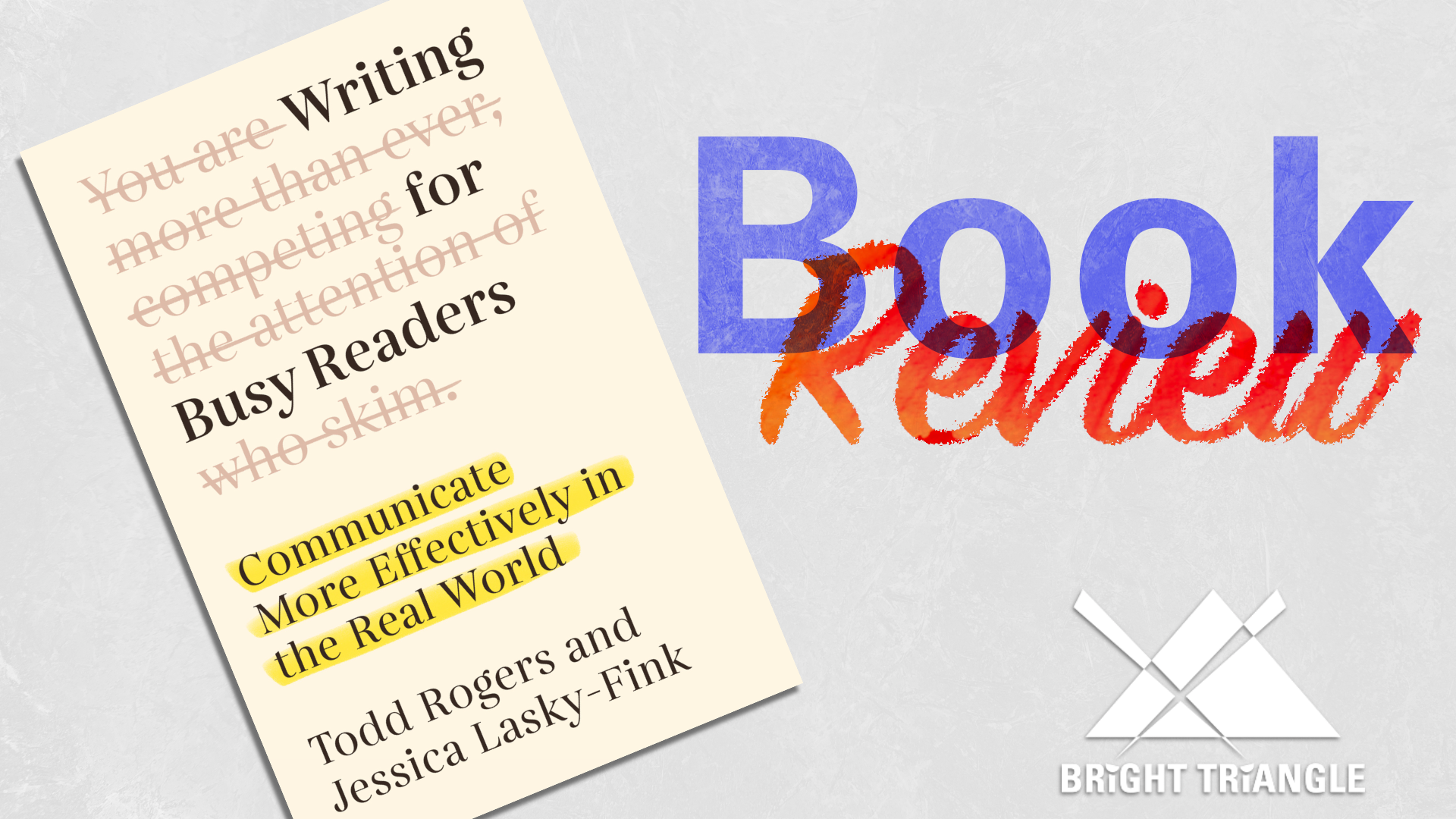Book Review: Writing for Busy Readers by Todd Rogers and Jessica Lasky-Fink
Writing for Busy Readers is a quick and engaging read. It underscores the dual benefits of effective writing: easing the reader’s burden while clarifying and achieving the writer’s goals. By adopting a reader-centric approach and embracing the principles outlined in the book, writers can enhance their communication skills and make a meaningful impact in a world inundated with information. We highly recommend this book. Below, we summarize some of the main points.
“Effective writing respects the innate limitations of the busy brain, making it both useful and also kind, because it minimizes the stress you are placing on the reader.” (Page 28, emphasis ours).
Rogers and Lasky-Fink emphasize the transformative power of effective writing, not just for the writer but also for the reader. The authors show how well-crafted writing can inspire action by transmitting ideas from one person to another. Conversely, ineffective writing can pose significant barriers, especially for readers with limited literacy, time constraints, or other challenges.
The book outlines six principles of effective writing, including the concepts of “less is more,” making reading easy and designing for easy navigation. Rogers and Lasky-Fink stress the importance of clarity, conciseness, and simplicity in conveying information to busy readers. Additionally, they provide tips and tools for implementing these principles.
So, how do we improve and make our writing more accessible? By thinking like a busy reader, writers can tailor their communication to maximize engagement and comprehension. While the authors primarily focused on emails, texts, and letters, many of their rules of thumb apply to presentation slides.
Rogers and Lasky-Fink explain, “Life would be completely overwhelming if the attention system wasn’t so limited. To keep the world manageable, our brains constantly evaluate all the types of information that bombard us (including sights, sounds, physical senses, emotions, and thoughts) and select what is important or relevant enough to make it through the filter.” (Page 18)
When an audience member is confronted with a slide full of text, they may just tune out all the content. This is precisely why we take the less is more approach when developing visuals for presentations.

